Mohammad Mohammadi Amiri
SentenceKV: Efficient LLM Inference via Sentence-Level Semantic KV Caching
Apr 01, 2025Abstract:Large language models face significant computational and memory challenges when processing long contexts. During inference, efficient management of the key-value (KV) cache, which stores intermediate activations for autoregressive generation, is critical to reducing memory overhead and improving computational efficiency. Traditional token-level efficient KV caching methods overlook semantic information, treating tokens independently without considering their semantic relationships. Meanwhile, existing semantic-preserving KV cache management approaches often suffer from substantial memory usage and high time-to-first-token. To address these limitations, we propose SentenceKV, a novel sentence-level semantic KV caching approach designed to enhance inference efficiency while preserving semantic coherence. During prefilling, SentenceKV groups tokens based on sentence-level semantic similarity, compressing sentence representations into concise semantic vectors stored directly on the GPU, while individual KV pairs are offloaded to CPU. During decoding, SentenceKV generates tokens by selectively retrieving semantically relevant sentence-level KV entries, leveraging the semantic similarity between the prefilling-stage semantic vectors and decoding-stage queries. This ensures efficient and contextually accurate predictions, minimizing the loading of redundant or irrelevant data into GPU memory and significantly reducing memory overhead while maintaining stable inference latency, even for extremely long contexts. Extensive evaluations on benchmarks including PG-19, LongBench, and Needle-In-A-Haystack demonstrate that SentenceKV significantly outperforms state-of-the-art methods in both efficiency and memory usage, without compromising model accuracy.
Disentangled Structural and Featural Representation for Task-Agnostic Graph Valuation
Aug 22, 2024Abstract:With the emergence of data marketplaces, the demand for methods to assess the value of data has increased significantly. While numerous techniques have been proposed for this purpose, none have specifically addressed graphs as the main data modality. Graphs are widely used across various fields, ranging from chemical molecules to social networks. In this study, we break down graphs into two main components: structural and featural, and we focus on evaluating data without relying on specific task-related metrics, making it applicable in practical scenarios where validation requirements may be lacking. We introduce a novel framework called blind message passing, which aligns the seller's and buyer's graphs using a shared node permutation based on graph matching. This allows us to utilize the graph Wasserstein distance to quantify the differences in the structural distribution of graph datasets, called the structural disparities. We then consider featural aspects of buyers' and sellers' graphs for data valuation and capture their statistical similarities and differences, referred to as relevance and diversity, respectively. Our approach ensures that buyers and sellers remain unaware of each other's datasets. Our experiments on real datasets demonstrate the effectiveness of our approach in capturing the relevance, diversity, and structural disparities of seller data for buyers, particularly in graph-based data valuation scenarios.
Data Measurements for Decentralized Data Markets
Jun 06, 2024Abstract:Decentralized data markets can provide more equitable forms of data acquisition for machine learning. However, to realize practical marketplaces, efficient techniques for seller selection need to be developed. We propose and benchmark federated data measurements to allow a data buyer to find sellers with relevant and diverse datasets. Diversity and relevance measures enable a buyer to make relative comparisons between sellers without requiring intermediate brokers and training task-dependent models.
Fundamentals of Task-Agnostic Data Valuation
Aug 25, 2022



Abstract:We study valuing the data of a data owner/seller for a data seeker/buyer. Data valuation is often carried out for a specific task assuming a particular utility metric, such as test accuracy on a validation set, that may not exist in practice. In this work, we focus on task-agnostic data valuation without any validation requirements. The data buyer has access to a limited amount of data (which could be publicly available) and seeks more data samples from a data seller. We formulate the problem as estimating the differences in the statistical properties of the data at the seller with respect to the baseline data available at the buyer. We capture these statistical differences through second moment by measuring diversity and relevance of the seller's data for the buyer; we estimate these measures through queries to the seller without requesting raw data. We design the queries with the proposed approach so that the seller is blind to the buyer's raw data and has no knowledge to fabricate responses to queries to obtain a desired outcome of the diversity and relevance trade-off.We will show through extensive experiments on real tabular and image datasets that the proposed estimates capture the diversity and relevance of the seller's data for the buyer.
Private independence testing across two parties
Jul 08, 2022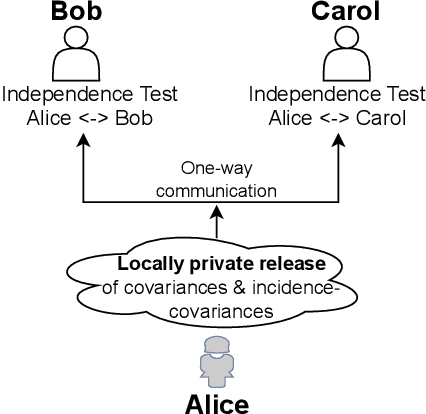
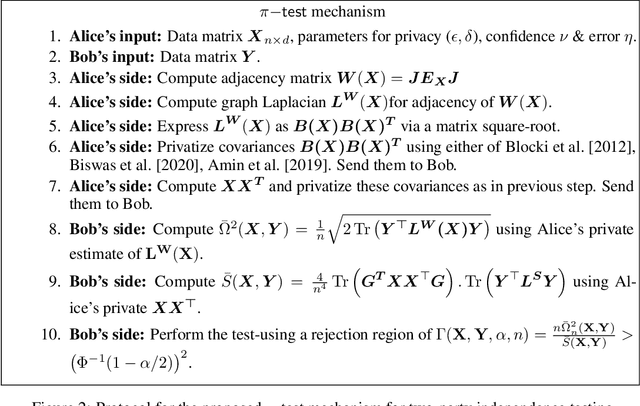
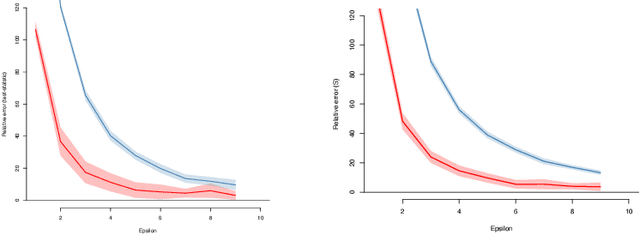
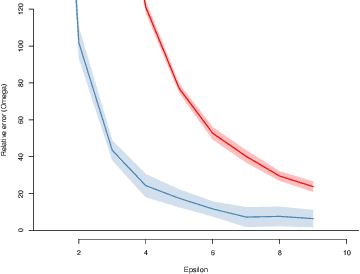
Abstract:We introduce $\pi$-test, a privacy-preserving algorithm for testing statistical independence between data distributed across multiple parties. Our algorithm relies on privately estimating the distance correlation between datasets, a quantitative measure of independence introduced in Sz\'ekely et al. [2007]. We establish both additive and multiplicative error bounds on the utility of our differentially private test, which we believe will find applications in a variety of distributed hypothesis testing settings involving sensitive data.
Federated Learning with Downlink Device Selection
Jul 07, 2021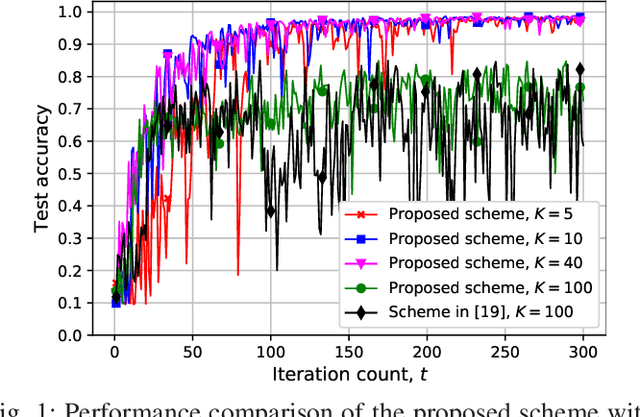
Abstract:We study federated edge learning, where a global model is trained collaboratively using privacy-sensitive data at the edge of a wireless network. A parameter server (PS) keeps track of the global model and shares it with the wireless edge devices for training using their private local data. The devices then transmit their local model updates, which are used to update the global model, to the PS. The algorithm, which involves transmission over PS-to-device and device-to-PS links, continues until the convergence of the global model or lack of any participating devices. In this study, we consider device selection based on downlink channels over which the PS shares the global model with the devices. Performing digital downlink transmission, we design a partial device participation framework where a subset of the devices is selected for training at each iteration. Therefore, the participating devices can have a better estimate of the global model compared to the full device participation case which is due to the shared nature of the broadcast channel with the price of updating the global model with respect to a smaller set of data. At each iteration, the PS broadcasts different quantized global model updates to different participating devices based on the last global model estimates available at the devices. We investigate the best number of participating devices through experimental results for image classification using the MNIST dataset with biased distribution.
Blind Federated Edge Learning
Oct 19, 2020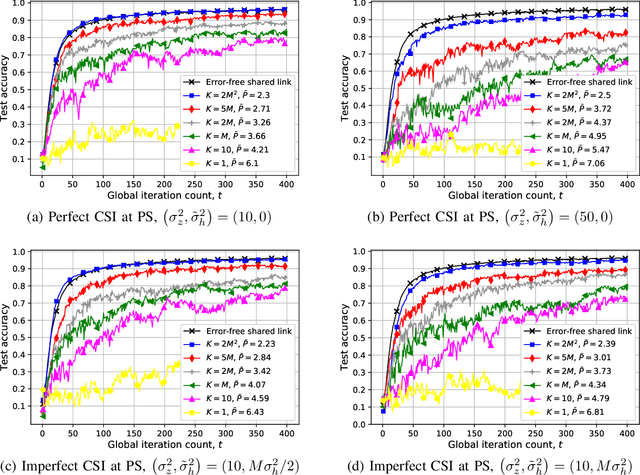

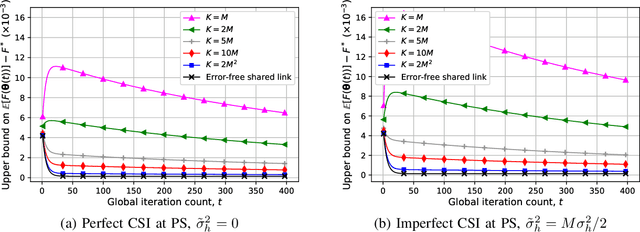
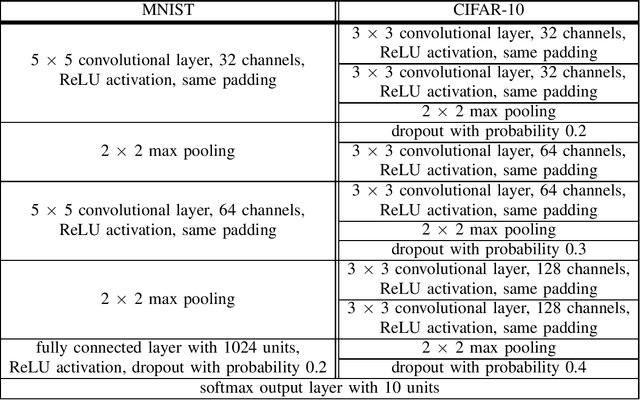
Abstract:We study federated edge learning (FEEL), where wireless edge devices, each with its own dataset, learn a global model collaboratively with the help of a wireless access point acting as the parameter server (PS). At each iteration, wireless devices perform local updates using their local data and the most recent global model received from the PS, and send their local updates to the PS over a wireless fading multiple access channel (MAC). The PS then updates the global model according to the signal received over the wireless MAC, and shares it with the devices. Motivated by the additive nature of the wireless MAC, we propose an analog `over-the-air' aggregation scheme, in which the devices transmit their local updates in an uncoded fashion. Unlike recent literature on over-the-air edge learning, here we assume that the devices do not have channel state information (CSI), while the PS has imperfect CSI. Instead, the PS is equipped multiple antennas to alleviate the destructive effect of the channel, exacerbated due to the lack of perfect CSI. We design a receive beamforming scheme at the PS, and show that it can compensate for the lack of perfect CSI when the PS has a sufficient number of antennas. We also derive the convergence rate of the proposed algorithm highlighting the impact of the lack of perfect CSI, as well as the number of PS antennas. Both the experimental results and the convergence analysis illustrate the performance improvement of the proposed algorithm with the number of PS antennas, where the wireless fading MAC becomes deterministic despite the lack of perfect CSI when the PS has a sufficiently large number of antennas.
Communicate to Learn at the Edge
Sep 28, 2020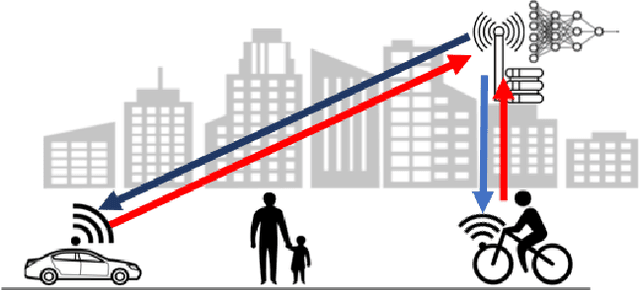
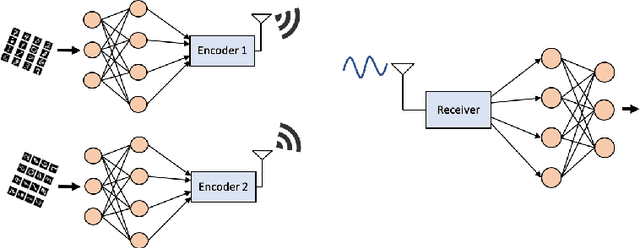
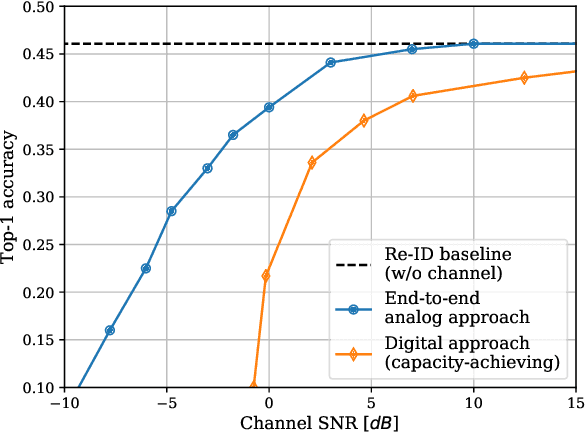
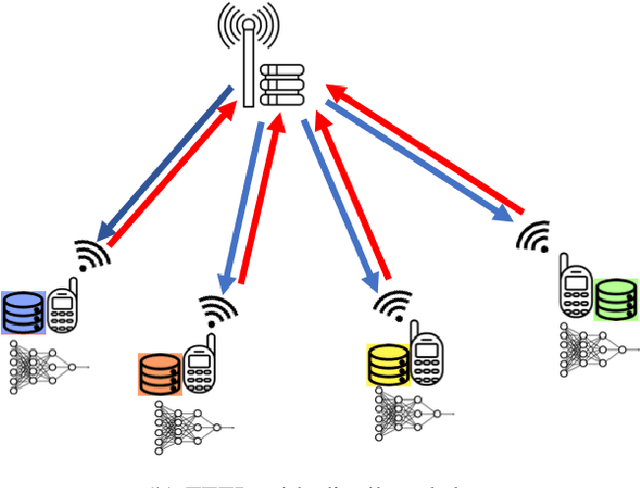
Abstract:Bringing the success of modern machine learning (ML) techniques to mobile devices can enable many new services and businesses, but also poses significant technical and research challenges. Two factors that are critical for the success of ML algorithms are massive amounts of data and processing power, both of which are plentiful, yet highly distributed at the network edge. Moreover, edge devices are connected through bandwidth- and power-limited wireless links that suffer from noise, time-variations, and interference. Information and coding theory have laid the foundations of reliable and efficient communications in the presence of channel imperfections, whose application in modern wireless networks have been a tremendous success. However, there is a clear disconnect between the current coding and communication schemes, and the ML algorithms deployed at the network edge. In this paper, we challenge the current approach that treats these problems separately, and argue for a joint communication and learning paradigm for both the training and inference stages of edge learning.
Convergence of Federated Learning over a Noisy Downlink
Aug 25, 2020
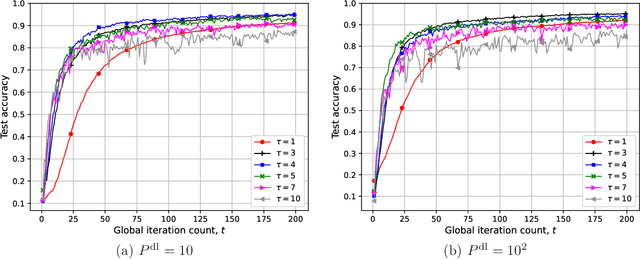
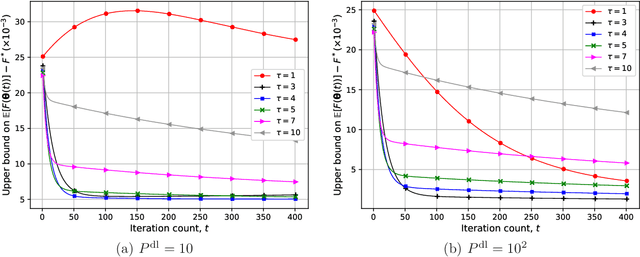
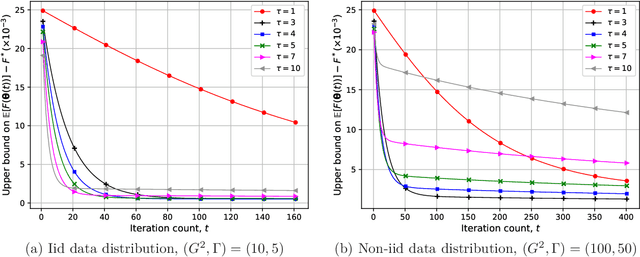
Abstract:We study federated learning (FL), where power-limited wireless devices utilize their local datasets to collaboratively train a global model with the help of a remote parameter server (PS). The PS has access to the global model and shares it with the devices for local training, and the devices return the result of their local updates to the PS to update the global model. This framework requires downlink transmission from the PS to the devices and uplink transmission from the devices to the PS. The goal of this study is to investigate the impact of the bandwidth-limited shared wireless medium in both the downlink and uplink on the performance of FL with a focus on the downlink. To this end, the downlink and uplink channels are modeled as fading broadcast and multiple access channels, respectively, both with limited bandwidth. For downlink transmission, we first introduce a digital approach, where a quantization technique is employed at the PS to broadcast the global model update at a common rate such that all the devices can decode it. Next, we propose analog downlink transmission, where the global model is broadcast by the PS in an uncoded manner. We consider analog transmission over the uplink in both cases. We further analyze the convergence behavior of the proposed analog approach assuming that the uplink transmission is error-free. Numerical experiments show that the analog downlink approach provides significant improvement over the digital one, despite a significantly lower transmit power at the PS. The experimental results corroborate the convergence results, and show that a smaller number of local iterations should be used when the data distribution is more biased, and also when the devices have a better estimate of the global model in the analog downlink approach.
Federated Learning With Quantized Global Model Updates
Jun 18, 2020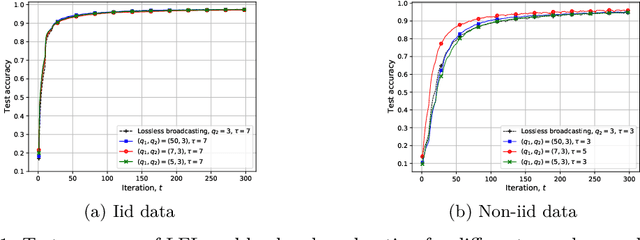
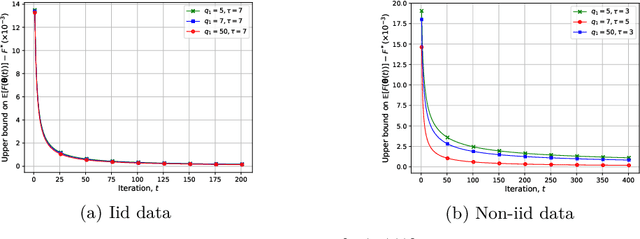
Abstract:We study federated learning (FL), which enables mobile devices to utilize their local datasets to collaboratively train a global model with the help of a central server, while keeping data localized. At each iteration, the server broadcasts the current global model to the devices for local training, and aggregates the local model updates from the devices to update the global model. Previous work on the communication efficiency of FL has mainly focused on the aggregation of model updates from the devices, assuming perfect broadcasting of the global model. In this paper, we instead consider broadcasting a compressed version of the global model. This is to further reduce the communication cost of FL, which can be particularly limited when the global model is to be transmitted over a wireless medium. We introduce a lossy FL (LFL) algorithm, in which both the global model and the local model updates are quantized before being transmitted. We analyze the convergence behavior of the proposed LFL algorithm assuming the availability of accurate local model updates at the server. Numerical experiments show that the quantization of the global model can actually improve the performance for non-iid data distributions. This observation is corroborated with analytical convergence results.
 Add to Chrome
Add to Chrome Add to Firefox
Add to Firefox Add to Edge
Add to Edge